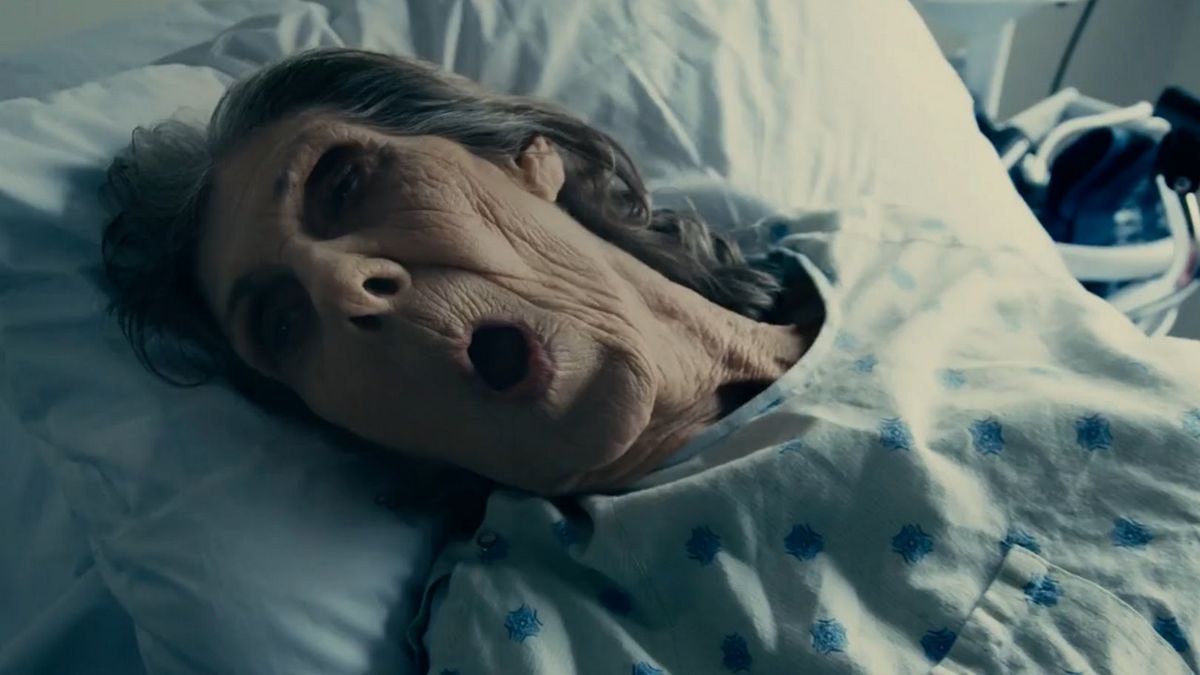She forgot who she was. But something else remembered
The Taking of Deborah Logan (2014), directed by Adam Robitel, begins as a harrowing medical documentary and slowly descends into supernatural horror. Disguised as a found-footage film, it tells the story of a woman seemingly suffering from Alzheimer’s—until her symptoms take a terrifying turn. With clever pacing and a chilling blend of realism and the paranormal, the film stands out as one of the most underrated entries in modern horror.
The story follows a student documentary crew filming the daily life of Deborah Logan (played hauntingly by Jill Larson), an elderly woman in the throes of Alzheimer's. Her daughter, Sarah, has reluctantly allowed cameras into their home to document Deborah’s condition in exchange for financial aid. At first, the footage captures expected memory lapses and confusion. But as days go by, Deborah begins to act violently, speak in foreign tongues, and exhibit impossible physical behaviors. What begins as a study in dementia becomes a horrifying investigation into demonic possession—and a decades-old evil that was never fully buried.

What makes the film especially effective is its gradual transformation. It lures you in with grounded emotional performances and a raw depiction of illness. Deborah’s condition is presented with deep empathy, making the horror feel eerily plausible. But as the truth peels away, the supernatural horror bleeds in—subtly at first, then with terrifying clarity. The juxtaposition between the clinical tone of the documentary and the escalating madness intensifies the fear, making even the mundane feel threatening.
Jill Larson delivers a powerhouse performance as Deborah, balancing fragility, confusion, and a terrifying presence that grows more menacing with every frame. Her physical transformation—sometimes subtle, sometimes grotesque—is made all the more disturbing by how convincingly it’s grounded in real-world disease. Anne Ramsay, as her daughter Sarah, gives the film its emotional anchor, portraying helplessness, grief, and desperation as she tries to save a mother she no longer recognizes.
The found-footage format is used smartly—never too shaky, never too gimmicky. The fixed cameras and night vision sequences offer some of the film’s most bone-chilling moments, particularly one now-iconic scene deep in a tunnel that cements the movie’s place in horror history. There’s something especially terrifying about seeing possession through the lens of scientific observation—it strips away sensationalism and makes the impossible feel uncomfortably real.

At its heart, The Taking of Deborah Logan is about control—losing it, surrendering it, and the horror of something else taking over. It’s not just a possession story. It’s a metaphor for watching someone you love vanish in front of your eyes, only to be replaced by something you can’t explain. That’s where the real terror lies.

-1754294134-q80.webp)
-1751428503-q80.webp)
-1754992105-q80.webp)